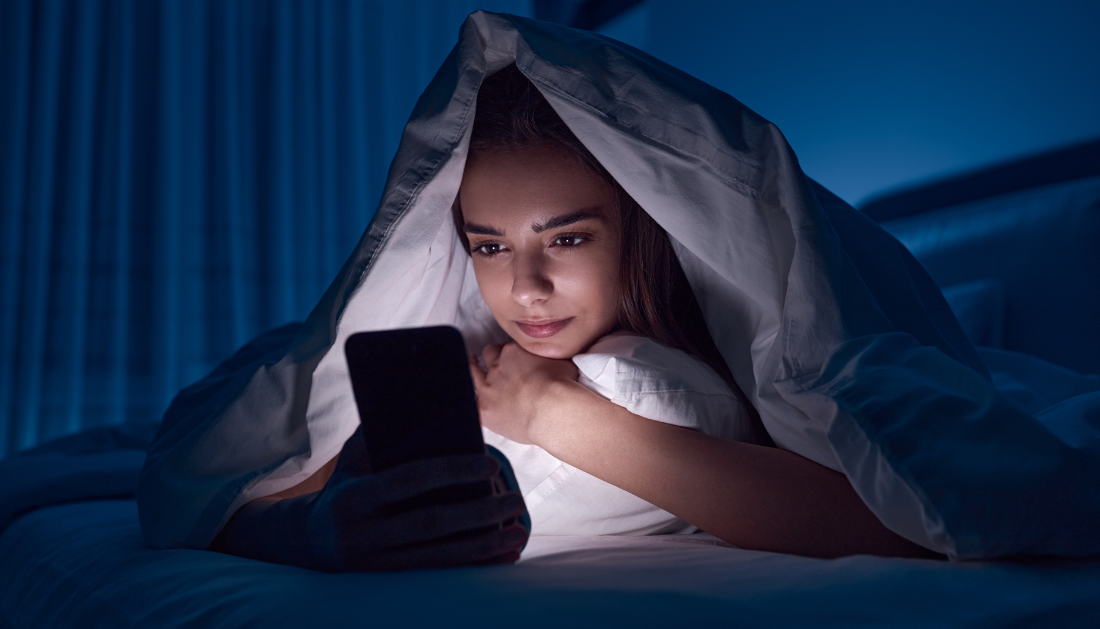

In addition to confirming the well-established link between mobile phone addiction and sleeplessness, a recent study published in Frontiers Public Health offered evidence that this detrimental effect can be lessened by increased physical activity.
Social media use was viewed as advantageous during the COVID-19 epidemic for both spreading public health information and offering social assistance during widespread isolation. However, as the current study’s authors pointed out, it is important to take into consideration the drawbacks of cell phone use, including its known impact on sleeplessness. The authors noted that while research on the impact of teen phone use during the pandemic has primarily concentrated on mental health, it is unclear what effect it has had on sleeplessness.
To close this information gap, researchers looked into the underlying causes of the association between sleeplessness and cell phone addiction in college students, taking into account the moderating effects of physical exercise and the mediating function of social anxiety. Chinese college students were surveyed for this study, which was carried out in the country that saw the first COVID-19 outbreak.
A survey administered online was used in this investigation, and 301 college students answered it. The Chinese version of the Mobile Phone Addiction Tendency Scale (MPATS) was used to gauge a student’s level of addiction to mobile phones; higher scores denote more severe addiction. Higher scores correspond to higher levels of social anxiety. The Social Phobia Inventory (SPIN), a Chinese version of the instrument, was used to measure social anxiety. The Physical Activity Rating Scale (PARS-3) was used to measure the amount of physical activity, and the Insomnia Severity Index was used to examine the severity of insomnia. Higher scores on both instruments correspond to higher levels of activity and more severe insomnia.
According to their findings, social anxiety and mobile phone addiction were significantly correlated (P <.001), while social anxiety and insomnia were highly correlated (P <.01). Overall, it was discovered that there was a substantial (P <.001) association between sleeplessness and cell phone addiction. The indirect association between them was also found to be significant (indirect effect = 0.03; SE = 0.01; 95% Boot CI, 0.01–0.06), which suggests that social anxiety may be a mediator of this relationship.
According to the self-reports, increasing physical activity can help people feel less addicted to their phones and less socially anxious. It was discovered that physical exercise had a substantial moderating effect (P <.05) on the association between sleeplessness and mobile phone addiction. The authors continued by noting that research has shown that physical activity can enhance mental health and help manage stress and loneliness. The results of the writers agreed with earlier studies in this field.
“But it is worth noting that social anxiety could only partially account for the relationship between mobile phone addiction and insomnia; thus other key latent indicators, such as interpersonal distress, should also considered when examining the mediation role between them afterwards,” they added.
The study’s shortcomings include the cross-sectional design’s inability to show causal links, the recall bias risk associated with self-reported data, and the use of convenient sampling, which produced a moderate sample size. Additionally, the results might not be as broadly applicable given their restricted emphasis on college students during a particular pandemic period.
“In summary, our research results indicate that increasing physical activity and reducing social anxiety can improve insomnia symptoms among college students,” the authors concluded. “To prevent future problematic behaviors among college students, it is necessary to adopt proactive health behaviors, such as engaging in physical activity, to counteract or avoid subsequent passive impacts.”
For more Information: Mobile phone addiction and insomnia among college students in China during the COVID-19 pandemic: a moderated mediation model, Frontiers in public Health, https://doi.org/10.3389/fpubh.2024.1338526
more recommended stories
 Phage Therapy Study Reveals RNA-Based Infection Control
Phage Therapy Study Reveals RNA-Based Infection ControlKey Takeaways (Quick Summary) Researchers uncovered.
 Pelvic Floor Disorders: Treatable Yet Often Ignored
Pelvic Floor Disorders: Treatable Yet Often IgnoredKey Takeaways (Quick Summary) Pelvic floor.
 Urine-Based microRNA Aging Clock Predicts Biological Age
Urine-Based microRNA Aging Clock Predicts Biological AgeKey Takeaways (Quick Summary) Researchers developed.
 Circadian Control of Neutrophils in Myocardial Infarction
Circadian Control of Neutrophils in Myocardial InfarctionKey Takeaways for HCPs Neutrophil activity.
 E-Cigarette Use and Heart Attack Risk in Former Smokers
E-Cigarette Use and Heart Attack Risk in Former SmokersKey Takeaways for Clinicians and Nurses.
 Ultramarathon Physiology: What HCPs Should Know?
Ultramarathon Physiology: What HCPs Should Know?Ultramarathon Metabolism: What Happens to the.
 High-Intensity Training and Oxidative Stress Insights
High-Intensity Training and Oxidative Stress InsightsNew Evidence Linking High-Intensity Training and.
 Sterilized Fermented Beverage for Obesity: New Evidence
Sterilized Fermented Beverage for Obesity: New EvidenceEarly Insights Into a Sterilized Fermented.
 36-Week Pre-eclampsia Screening May Reduce Term Risk
36-Week Pre-eclampsia Screening May Reduce Term RiskA New Preventive Strategy for Term.
 Cardiovascular Risk and Sudden Cardiac Death in Diabetes
Cardiovascular Risk and Sudden Cardiac Death in DiabetesRising Sudden Cardiac Death (SCD) Risk.

Leave a Comment